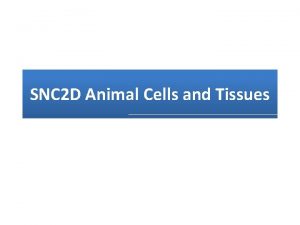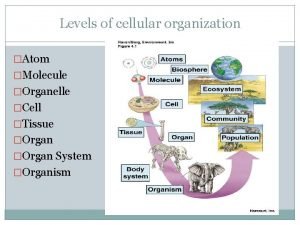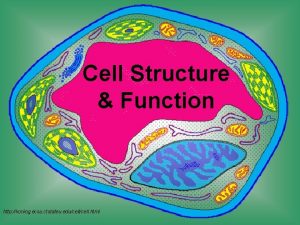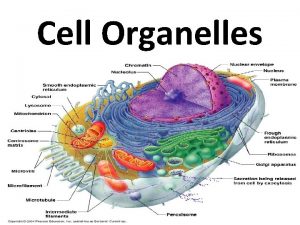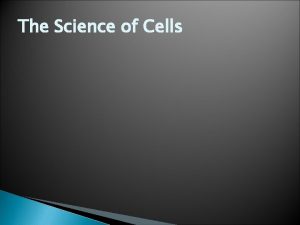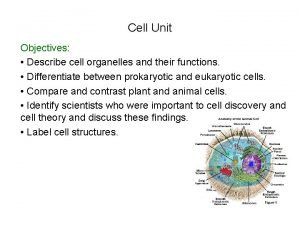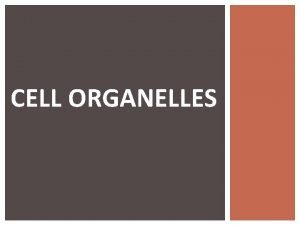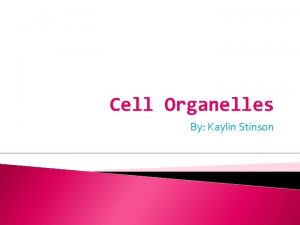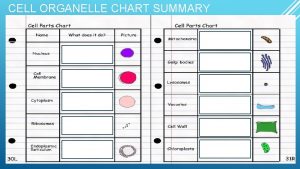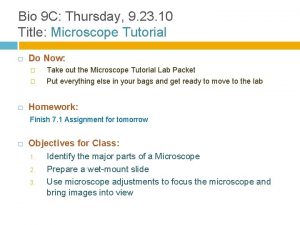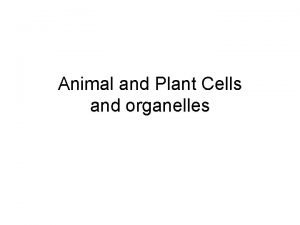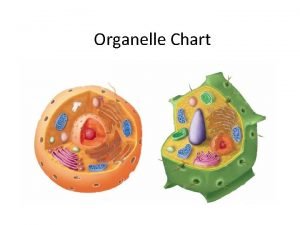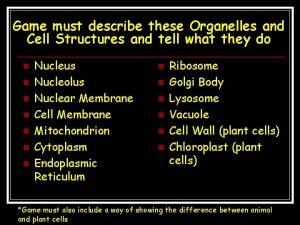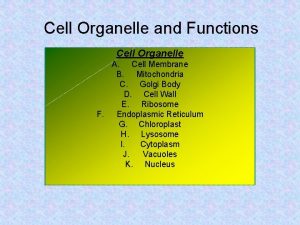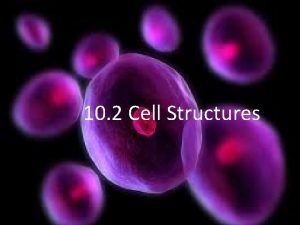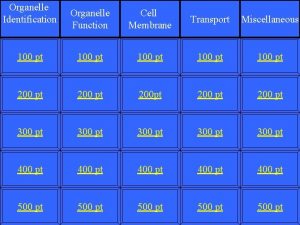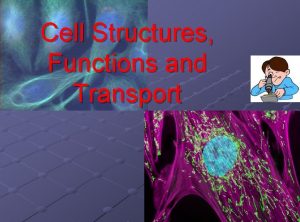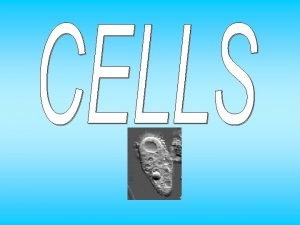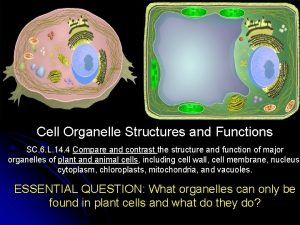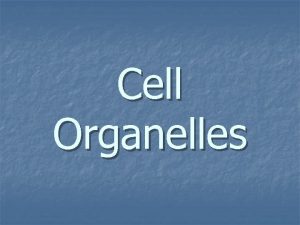10 2 Cell Structures Each type of organelle


















- Slides: 18

10. 2 Cell Structures

Each type of organelle within a cell has a different function. for example: nucleus controls the activities of a cell mitochondria – provides energy The structure (size and shape) of a cell determines its function. for example: blood cells are disc shaped to pass easily through blood vessels nerve cells send signals throughout the body

Two types of cells prokaryotic • No nucleus, genetic information floats freely • Not many organelles • Most are unicellular eukaryotic • Have a nucleus • Many organelles with unique functions • Larger (plants, animals) • Hint: YOU are YOUkaryotic

Cell Appendages are located on the outside of the cell and used for movement flagella cilia • long, tail-like • short, hair-like appendages structures • made of protein • Made of protein • whip back and forth • move a cell or to move the cell move molecules away from the cell Hint : flagella is like a flag moving in the wind Hint: cilia are silly

Cell Membrane • Flexible outer covering • Protects inside of cell from outside environment • Made of phospholipids and proteins • Allows substances to pass through Hint: like a coffee filter cell membrane →

Cytoplasm • Fluid (jelly-like) substance inside a cell • Composed of water, salts, and other molecules • Organelles float within the cytoplasm Cytoskeleton • Framework of cell that gives it its shape • Network of threads made of protein


Nucleus • • Largest organelle in a eukaryotic cell Directs cell activities Contains genetic information (DNA) Contains the nucleolus, the location where ribosomes are made. • Surrounded by a two membrane nuclear envelope which contains many pores that allow RNA and ribosomes to move in/out of nucleus

diagram of the nucleus

Ribosomes • Small structures that build proteins • Can float freely in the cytoplasm of a cell or on a web-like organelle outside the cell

Endoplasmic Reticulum • Web-like organelle that spreads from the nucleus throughout the cytoplasm • Rough ER – ER that has ribosomes attached and where proteins are made. • Smooth ER – ER without ribosomes, so only lipids are made.

Mitochondria • Organelles that process energy through chemical reactions (ATP) • Surrounded by two membranes

• There can be hundreds in a eukaryotic cell depending on the function of the cell. • Ex. a muscle cell requires more energy than a skin cell. Hint: You need a lot of energy to have “mighty” muscles

Golgi Apparatus • Receives proteins from ER • Prepares proteins for their specific jobs • Packages proteins into tiny, membranebound, ball-like structures called vacuole. Hint: same job as a Post Office

Vesicles Organelles that transport substances from one area of a cell to another. Hint: “Vesicles” have the same job as a “vehicles”

Lysosomes Contain substances that help break down and recycle cellular components Hint: Lysol spray cleaner

Plant cell A work in progress!

Vacuoles Saclike organelles that store food, water, and waste material Hint: refrigerator or vacuum cleaner
 Organelles graphic organizer
Organelles graphic organizer Which organelle prepares proteins for specific jobs
Which organelle prepares proteins for specific jobs Atoms
Atoms Atom molecule organelle cell
Atom molecule organelle cell Cell tissue
Cell tissue Cell organelle song
Cell organelle song Whats a vacuole
Whats a vacuole Riddle cell
Riddle cell Cell organelle webquest
Cell organelle webquest Organelle jeopardy
Organelle jeopardy 7 parts of a cell
7 parts of a cell Cell organelle
Cell organelle Animal cells have
Animal cells have Cell organelle graphic organizer answer key
Cell organelle graphic organizer answer key Organelle speed dating
Organelle speed dating What organelle is the stiff outer barrier of a plant cell?
What organelle is the stiff outer barrier of a plant cell? Facts about the vacuole
Facts about the vacuole Why did robert hooke name cells “cells”?
Why did robert hooke name cells “cells”? Organelle definition
Organelle definition


